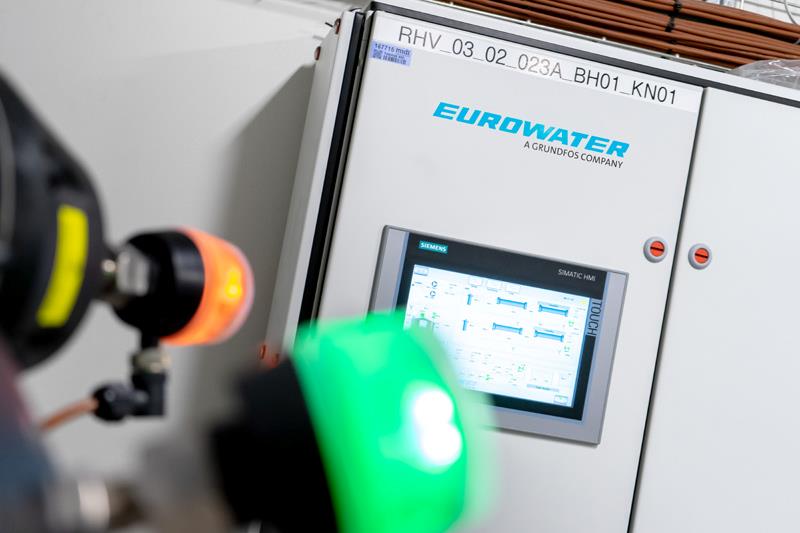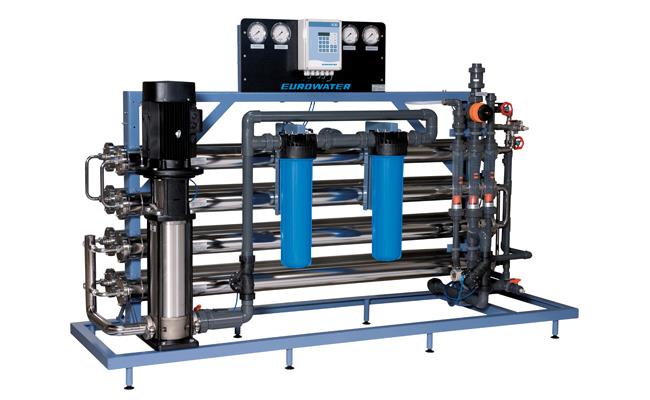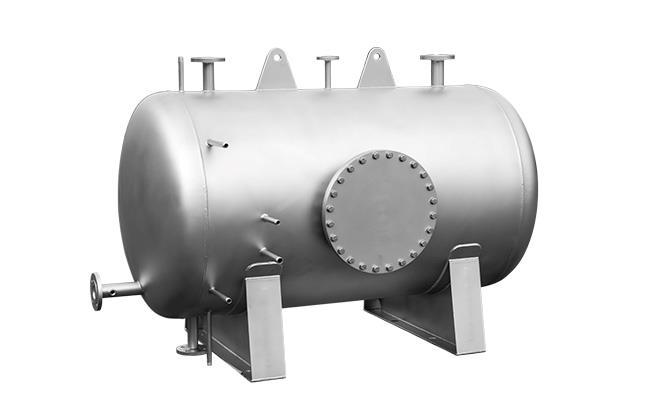72 Hours of Monitoring Without Guard
In several countries, it is possible today to obtain permission to run a steam boiler plant with 72 hours of monitoring without guard. As a principal rule to obtain 24/72 hours of monitoring without guard, the plant must normally be equipped in accordance with EN 12952-7 or EN 12953-6 inclusive of the sections that are referred to or something equivalent for instance TRD 604.

Operational and monitoring parameters
The present German minimum requirements comprise operational and monitoring parameters cf. TRD 604 and TRD 611. Three boiler feedwater qualities are distinguished in the latter:
Minimum requirements of water treatment
In industry steam is often produced in boilers of the type channel smoke tube boiler. Typically the set pressure of these boilers is less than 68 bar and often these boilers are fed with softened water poor in salts. Water treatment for these boilers aims at
- securing the personnel that supervises the boiler
- minimizing the risk of serious and expensive boiler failures
Irrespective of whether the boiler is fed with water poor in salts or saline water, the requirements according to TRD 611 are that
- the hardness in the boiler feedwater is max. 0.056 ºGH
- the oxygen content (O2) is max. 0.02 mg/l
- the pH-value is > 9
In some cases, the requirement of a max. hardness in the boiler feedwater of 0.056 ºGH can be obtained after a softening plant. Whether this is possible depends on the composition of the raw water. Where this is impossible the solution is further water treatment in which the water is demineralized. From an operational point of view demineralized boiler feedwater will always be preferable since the aim is to
- prevent corrosion and wear of boiler, steam, and condensate system
- impede formation of precipitations on the boiler's heating surfaces
- ensure clean and dry steam without the risk of entrainment of water or foam
- reduce the need for boiler blowdown whereby the energy loss is reduced
Demineralization in a reverse osmosis plant
The operation of a reverse osmosis plant is to press the water to be demineralized through the membranes of the plant, thus retaining the salts of the water. Exactly this retention of salts makes it necessary to pretreat the feedwater for the reverse osmosis plant. The pretreatment aims at avoiding calcium precipitation on the membranes. This can be obtained through softening of the feedwater since this process removes the calcium content in the water.
Alternatively a so-called antiscalant can be dosed that keeps the calcium dissolved. It must be realized that the salt content and the calcium content of the water in a reverse osmosis plant typically is reduced by app. 98 %. When dosing an antiscalant app. 2 % of the hardness of the mains water will pass through the membranes of the plant. This passage must correspond to the requirement of a hardness of max. 0.056 ºGH in the boiler feedwater. Thus, in order to meet this requirement the hardness in the mains water must be max. 2.8 ºGH which normally cannot be fulfilled.
Therefore, the conclusion is that as a principal rule it is necessary to soften the water before it is conducted to the reverse osmosis plant in order to comply with the requirements of TRD 611. If, however, a solution has been chosen that is based on dosing an antiscalant the hardness can be removed from the demineralized water from the reverse osmosis plant by installation of a softening plant after the reverse osmosis plant.

Deoxidation in a thermal deaerator
Immediately before the demineralized water is run to the boiler the oxygen must be removed in a thermal deaerator. In a thermal deaerator the water is heated with steam and the deaerator itself works at a constant overpressure of 0.2 bar corresponding to a boiling point temperature of 104 °C.
The purpose of heating the water is that the solubility of a gas in water decreases with rising temperature. Thus the viscosity of the water is reduced and the release of dissolved gases is furthered. In the end, a solvent is dosed to the boiler feedwater to increase the pH-value of the water to > 9. Thus a corrosion preventing magnetite coat is created in the boiler.

Requirements for monitoring of makeupwater
In order to change boiler operation from 24 hours of monitoring without guard to 72 hours the risk – as is the case with 24 hours of monitoring without guard – must normally be estimated as to penetration of oil, grease, acid, lye, salt water, and raw water in the water cycle. Furthermore, it must be described what happens if the specifications for makeupwater are not observed, that is, a description of how an automatic stop is done.
If there is risk of penetration of oil or grease into the boiler feedwater, it is necessary to install equipment for continuous supervision of the boiler feedwater. Suitable supervision aggregates must start an optical or an acoustical alarm when the boiler feedwater's contents of oil or grease are > 3 mg/l. The alarm must be maintained until a boiler attendant stops the alarm. At an oil or grease content > 5 mg/l, the burner of the boiler must be automatically stopped by the installed supervision aggregate.
In order to change from 24 hours of monitoring without guard to 72 hours the hardness in the water must be continuously monitored when using saline water e.g. softened boiler feedwater. If the limit value is exceeded, the water supply to the makeupwater tank must be automatically stopped, that is, if a contamination of the makeupwater happens or there is risk of pollution of the condensate a continuous monitoring must take place.
If the allowable level is exceeded, pollution of the feedwater tank must be prevented. This can be done by making a bypass for polluted condensate over the feedwater tank. Through this bypass the polluted water is conducted to the drain. Alternatively, the boiler's burner can be stopped. An aggregate for automatic hardness monitoring on the makeupwater line is best installed after the softening plant. The advantage of this is that the membranes of the reverse osmosis plant are protected against precipitation of hardness. When using salt-free boiler feedwater the conductivity of the boiler feedwater must be continuously monitored.
If the requirements of the TRD 611 are exceeded, the water supply must be automatically stopped. Another important condition to be mentioned at the end is that the conductivity of boiler water must be continuously monitored. If the conductivity is exceeded, the burner of the boiler must be automatically stopped.

How can we help?
Our team of specialists are ready to answer your questions about pure water treatment solutions.
